You’ve spent an incredible amount of time, money and effort to get your lawn into pristine shape. Then, out of nowhere, it always seems like there’s at least one patch of ground that turns brown and ruins the look you’ve been working so hard to achieve. Is it just an isolated issue, or do you possibly have a lawn disease that needs to be treated?
Here is a quick introduction for how to identify lawn diseases that should help you to discuss a plan with your local lawn expert to correct the problem and get your lawn back to all-green!
WHAT A LAWN DISEASE NEEDS TO GROW
 The bad news is that all it takes for a lawn disease pathogen to take root are a grass species that is more vulnerable to that pathogen and an outdoor environment where the pathogen thrives.
The bad news is that all it takes for a lawn disease pathogen to take root are a grass species that is more vulnerable to that pathogen and an outdoor environment where the pathogen thrives.
The good news is that proper lawn care and maintenance will minimize your risk for the pathogens to start growing even if they’re present. So before you rush out and buy toxic fungicides which might not be necessary (and which can harm the environment through groundwater pollution), first ask yourself if you’ve been properly watering and mowing your grass throughout the year.
If not, then maybe the problem can be resolved quite simply by mowing your grass at the proper height and ensuring that your soil is getting the correct amount of water and nutrients. Giving too much or too little water or fertilizer can create problems because your area’s particular mix of soil type, acidity, grass types, air temperature, and humidity can sometimes combine to create problems that don’t have to do with a disease.
Take some time to consult a lawn expert to get useful information about the most common issues other people in your area are experiencing. These local experts can also give you tips for watering the proper amount at different times of the year, as well as a fertilization plan for your lawn’s particular mix of grasses, which might be as simple, all-natural, and affordable as mulching your grass clippings and leaving them on your lawn instead of bagging and dumping them out.
THE MOST COMMON LAWN DISEASES
If your neck of the woods sees average temperatures in the 60-75 degree range, chances are your grass falls into the northern grass group. Bluegrass, ryegrass and fescue are the most common types of grass in this cool climate category. If you live where temperatures average above 80 degrees, you’re more likely to have hot climate, southern grasses Bahia, Bermudagrass, Centipede, St. Augustinegrass, or Zoysiagrass. While there are diseases that are unique to each region and climate, here are the top several diseases that are common across the U.S.
- Brown Patch: Like its name suggests, this disease will appear as a brown, round spot or other brown, dead-looking random dry shapes in your yard. Sometimes the outer ring of the patch will look darker than the inner area, and sometimes the middle of the patch will have some healthy-looking grass that starts to grow back. This disease is more common in hotter, more humid summer months. While the heat can bake your grass, the humidity helps the fungus to grow and make things worse in the patch.

- Summer Patch: Like brown patch, this one shows up in the hot summer months, as its name implies. The patches you see on the ground will probably be irregularly shaped and can sometimes appear as rings or crescents.
- Red Thread: This disease is also aptly-named for its appearance and can be identified by thin, reddish strands coming out from your grass. Often this disease is found in soils that are short on nutrients and where the climate is cooler but still humid which allows the fungus to fester and do its damage.
- Rust Diseases: This group of spores thrives the most from late summer to early autumn months, and is usually found in areas of your lawn that get less sunshine or air flow. At first glance, the color won’t appear as “rusty” – it might seem light-green or even yellow as you survey the irregular-shaped patches across your lawn – but if you look more closely at the grass blades themselves, you’ll see spots that are more of an orange, rusty color.
- Snow Mold: Both pink and gray snow mold, the two major types, grow under snow or when the weather is cooler and wetter for a long period of time. This kind of mold is most commonly found in the springtime.
WHAT TO DO NEXT
If any of these disease descriptions seem to match your situation, we again recommend seeking advice from local lawn experts. Applying a fungicide may be the answer, but if you’re concerned about protecting the environment, a more holistic and deliberate approach to year-round lawn care may be the best way to nurture your soil to provide the most beautiful grasses possible and minimize the impact of lawn diseases.
Continue Reading : HOW DO WEEDS SPREAD?
More info? For more information about robotic mowing services, check out our Mowbot website here.
Call 833-MOWBOT1 to schedule an appointment with a Mowbot specialist today!
 Call for an quick estimate
Call for an quick estimate 




.svg)

